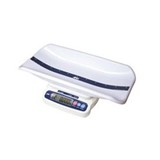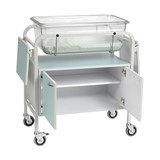Over the next five years, a wide range of Australian industries are set to grow by between 3.0 per cent and 36.2 per cent as a result of a mini baby boom spurred by rising incomes and changes to government funding for childcare, among other factors.
Business information analysts at IBISWorld forecast that the birth rate will increase by 6.4 per cent over the five years to 2019-20 to reach 332,901 births annually, compared with 2.9 per cent growth over the past five years.
Childcare services, preschool education, babysitting services, health insurance, fertility clinics and toy retailing are all set to expand due to the spike in births. During the period, these industries will benefit from growth in the Australian population of people aged 14 years and younger of 7.4 per cent, which includes immigration within this age group.
According to IBISWorld senior industry analyst Lauren Magner, "demographic changes within Australia will fuel demand for a range of products and services catering to mums and dads of young children, leading to significant transformation within these industries as the economy adjusts to new levels of demand."
Health insurance
Health insurance providers are expected to benefit from higher birth rates over the next five years, with revenue expected to surge by a colossal 36.2 per cent. IBISWorld estimates that families account for 51.3 per cent of revenue generated by the health insurance industry in 2014-15, or $10.8 billion, with this share expected to rise. An ageing population and government policy aimed at weaning patients off the public healthcare system are also expected to drive demand for health insurance.
"Often couples that are planning to have a baby will take out pregnancy health insurance, and health insurance for their child following the birth," Magner said. "It follows that an increase in the birth rate will lead to a surge in health insurance premiums and revenue."
Fertility clinics
Australia's second baby boom is indicative of growing demand for fertility education and services. Strong demand for fertility clinics will fuel the rise in births within Australia, with almost one in six women suffering fertility issues.
Growth in demand for fertility clinics over the past five years has been strong, according to IBISWorld, signalling an increase in births over the short term. Industry growth is expected to continue, with fertility clinic revenue forecast to grow by 34.8 per cent between 2014-15 and 2019-20.
Childcare services
Childcare services include long day care, before and after-school care, and family day care, with children aged between three and four years comprising the largest demographic. This industry is expected to receive a considerable boost from the boom in the number of teeny tots. IBISWorld forecasts that industry revenue will grow by 34.2 per cent over the five years through 2019-20 to $12.1 billion.
"An increase in the population that uses the industry's services will lead to strong growth in demand for childcare," Magner said. "This will be aided by the continued rise in the female labour participation rate and ongoing government assistance through the Child Care Rebate and Child Care Benefit."
Preschool education
An increase in the birth rate will ultimately lead to an increase in preschool enrolments, and industry revenue, in the next three to four years. The preschool education industry has benefited from increased Federal Government funding and changes to early childhood education policies. The Government's aim is to have every child attend preschool education for 15 hours per week for 40 weeks in the year prior to primary school education.
"The rising number of working mothers has increased demand for child-minding services, including preschool education," Magner said. "However, the effect on demand for preschool education has been constrained due to the inflexible nature of preschool services. As preschools usually only offer two to three days care, or short sessions, many families are choosing to use childcare services instead."
Babysitting and other personal services
IBISWorld estimates that in 2014-15, babysitters account for 22.1 per cent of revenue generated by the extremely diverse babysitting and other personal services industry, or $291.7 million.
"Over the past five years, demand for babysitters has declined due to the expansion of services offered by childcare businesses and nurseries," Magner said. "Some demand for babysitters and nannies exists due to their greater flexibility and the growing difficulty of securing a spot in formal childcare. This flexibility, along with expected Federal Government funding for nannies, will support growth over the next five years."
Baby food manufacturing
IBISWorld forecasts that consumer preferences for premium products and a jump in baby numbers will lead to growth of 15.1 per cent for the baby food manufacturing industry over the next five years.
"Consumer trends are significantly altering the range of goods produced by the baby food manufacturing industry," Magner said. "Parents are becoming increasingly conscious of what they are feeding their babies and children. They are wanting to provide their young ones with optimal nutrition, which has led to higher demand for premium and gourmet baby foods that are nutrient-enriched," said Magner.
"Mothers are also breastfeeding for shorter periods due to busy lifestyles and returning to work sooner after giving birth. This trend is diving sales for organic infant formula, as well as milk and gluten-free ranges, which come with higher price tags. The return of mothers to the labour force has also assisted demand for convenient, nutritious food products," added Magner.
Toy and game retailing
A surge in the number of Australians aged 14 and younger will lead to higher demand for toys and games, both traditional and electronic. IBISWorld estimates that the toy and game retailing industry will grow by 8.1 per cent over the five years through 2019-20.
"Tough retail conditions have plagued the toy and game retailing industry over the past five years, but a spike in the number of young Australians will lead to greater demand for industry products over the next five years," Magner said.
"Consumer preference will determine the types of toys sold, with educational toys that use basic skills, such as hand-eye coordination, and that introduce phonetics, mathematics and reading skills to children expected to grow over the period," added Magner.
Prices for toys are expected to decline due to improved efficiencies through the supply chain and competition among retailers.
Sanitary paper product manufacturing
The manufacture of sanitary baby products accounts for an estimated 24.1 per cent of the sanitary paper product manufacturing industry in 2014-15, or $537.0 million. These products include nappies, baby wipes and other paper-based baby products, which are regarded as necessities when raising an infant. Since demand for sanitary baby products is closely aligned with demographic trends, a rise in the number of babies will directly affect the sanitary paper product manufacturing industry. IBISWorld expects that the overall industry will expand by 3.3 per cent over the five years through 2019-20.
"Manufacturers have had to deal with intensifying competition from low-cost manufacturers abroad, which has resulted in higher import penetration," said Magner.
Magner said that the expected boom in births would provide manufacturers of sanitary baby products with a slight reprieve over the next five years. "Increased environmental awareness among Australian parents, however, is leading to a shift towards reusable nappies, which will offset some of the increased demand," added Magner.
Infants' and children's clothing retailing
The infants' and children's clothing retailing industry will directly benefit from a growth spurt in the population aged 14 years and younger, as clothing is considered an essential expense. IBISWorld forecasts that this industry will grow by 3.0 per cent over the five years through 2019-20.
"The industry will benefit from this mini baby boom in Australia, and from other demographic trends. People's wages tend to increase as they get older, and with many Australians having children later in life, new parents have more money to spend on clothes for their children," Magner said.
Magner, however, concluded that fierce competition from online retailers, the influx of discount international retailers and the high level of imports from low-cost manufacturers would place downward pressure on the prices of clothing for infants and children over the next five years. This is expected to temper growth for the infants' and children's clothing retailing industry.



-160x160-state_article-rel-cat.jpg)
